
Imagine you’re running an online store that sells products meant for different age groups - some items are for adults only, while others are family-friendly. You want to make sure that your customers can easily navigate to the right sections based on their age.
In this blog post, we’ll guide you through creating an age verification form that uses conditional logic to display appropriate confirmation messages and redirect users to relevant pages. By implementing this setup, you’ll ensure a smooth and age-appropriate experience for your customers.
In this blog, we’ll explore:
Why use an age verification form?
As a website or platform owner, you understand the importance of safeguarding age-sensitive content from underage access. Whether you’re dealing with adult material, age-restricted products, or services tailored to specific age groups, ensuring the right users can proceed is paramount. Imagine a scenario where a curious child stumbles upon content meant for mature audiences - an awkward and potentially harmful situation for all involved.
That’s where an age confirmation form comes into play, acting as a virtual bouncer, protecting both your content and your users. By leveraging the power of conditional logic, exit form rules, and dynamic confirmation messages in PlatoForms, you can create a seamless and professional experience, tailoring the user journey based on their age input.
What is conditional logic and exit form rule?
When it comes to creating an age verification form, two powerful features in PlatoForms can help streamline the process: conditional logic and exit form rules.
conditional logic allows you to set up rules that determine what happens next based on the user’s input. In this case, you can use it to display different messages or redirect users to specific content depending on their age. For example, if the user enters an age below 18, you might show a polite message explaining that the content is restricted.
The exit form feature allows users to exit the form without saving any data they’ve entered. But here’s the cool part - you can combine it with conditional confirmation messages or redirect links to create a seamless flow based on the user’s actions.
By combining these features, you can create a smooth and secure age verification process that guides users to the appropriate content while protecting your age-sensitive material from unintended access.
Step-by-step guide
Let’s explore the tricks behind PlatoForms’ features to create a smooth age verification form. Imagine you have a form that starts by asking the user’s age. Based on the age entered:
- If the user is under 18: Upon clicking “Continue,” they see a message, “Sorry, you must be at least 18 years old to continue,” and are redirected to an exit page.
- If the user is 18 or older: Upon clicking “Continue,” they are redirected to the second page of the form to provide more details.
-
Create your form: start by creating a new form. This form will have at least two pages:
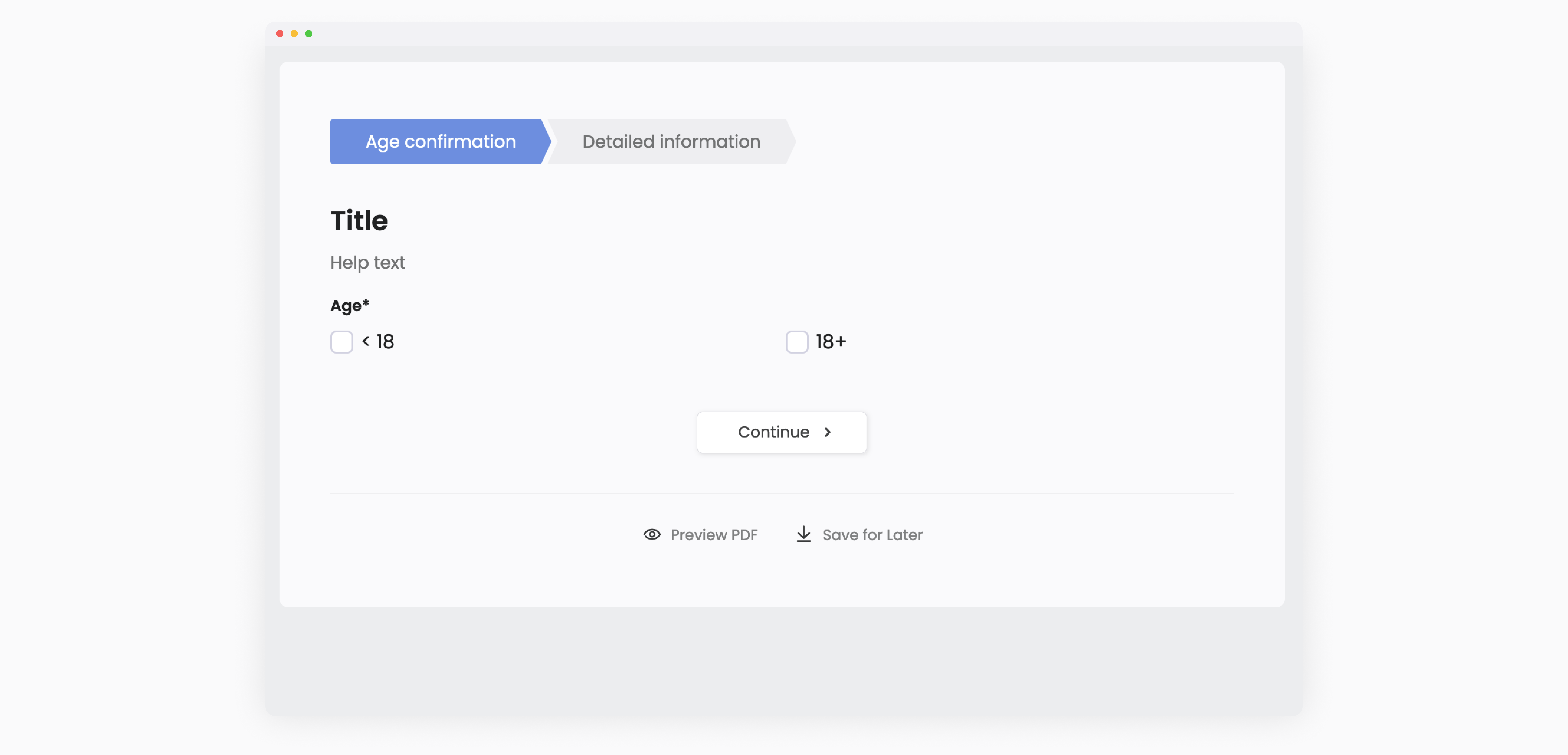
-
Page 1: Age confirmation. This page asks users to confirm their age.
-
Page 2: Detailed information for users 18 and older. This page collects detailed information from users who are 18 years old or older. It can include fields for personal information, contact details, and any other relevant data required for the form’s purpose.
-
-
Add an age question: On the first page of your form, include a question to ask the user’s age. This can be done using a simple Text Input field with the number type, or a Choice field with two options: “<18” and “18+”. For example:
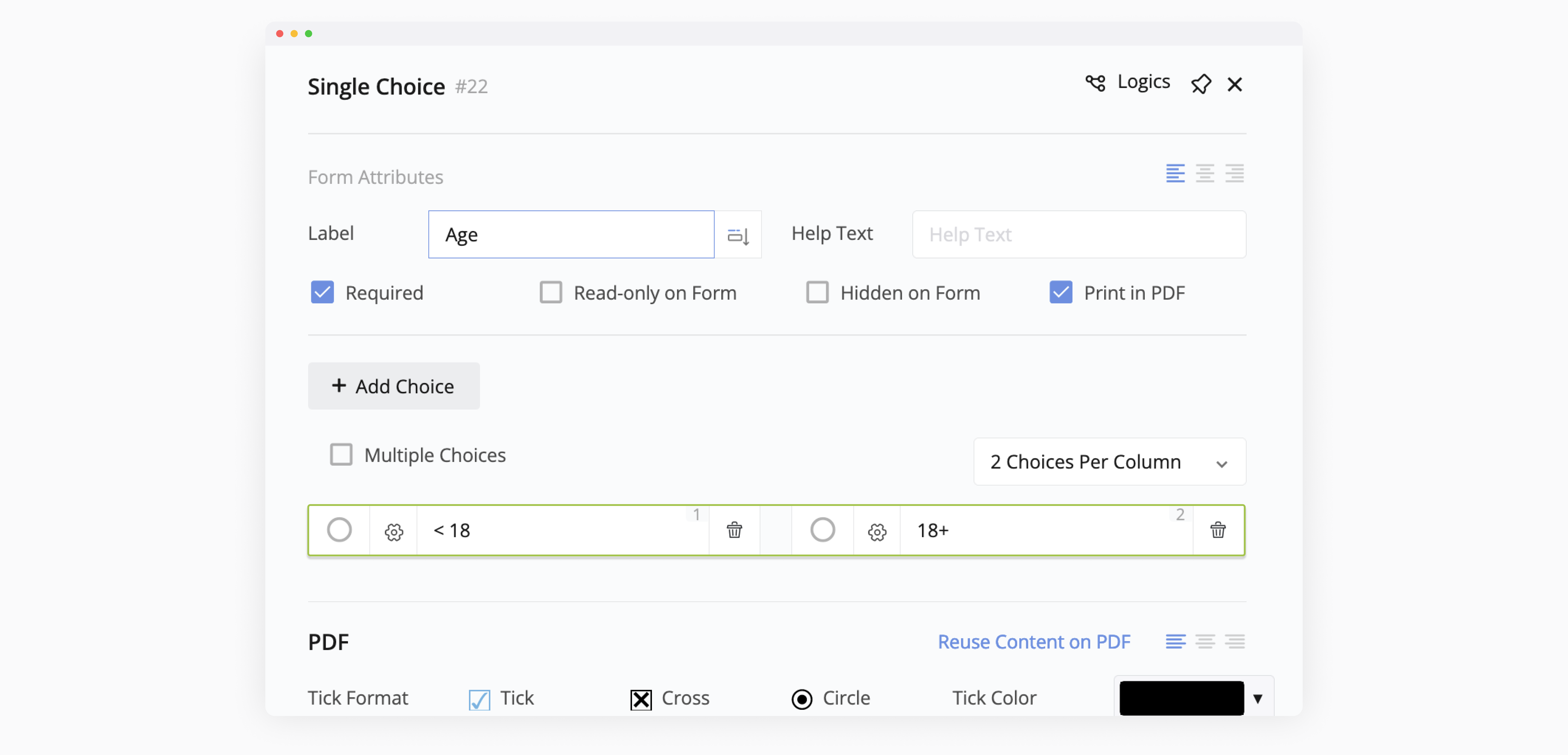
-
Set up conditional confirmation messages and redirect links: customize the confirmation messages based on the user’s age.
-
Go to the Submit Confirmation tab in your form settings, and click Add Confirmation (Logic Use).
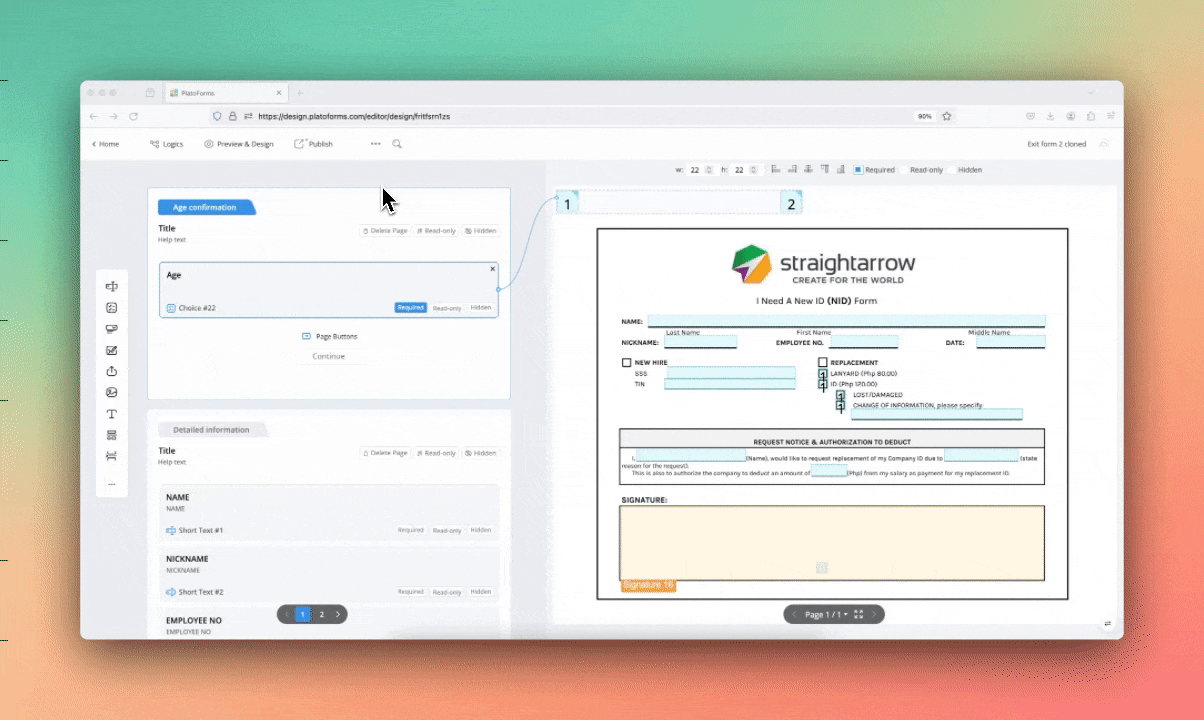
-
Create message for age group younger than 18 years old, for example, “Sorry, you must be at least 18 years old to continue.”
-
-
Configure exit form: next, configure the exit form rule. This ensures that users under 18 will exit the form without saving any data.
-
In the top left of your form builder, find the Logics button and click it to open the Logics panel.
-
Specify the conditions under which specific confirmation message will show and the form will exit when the user clicks Continue.
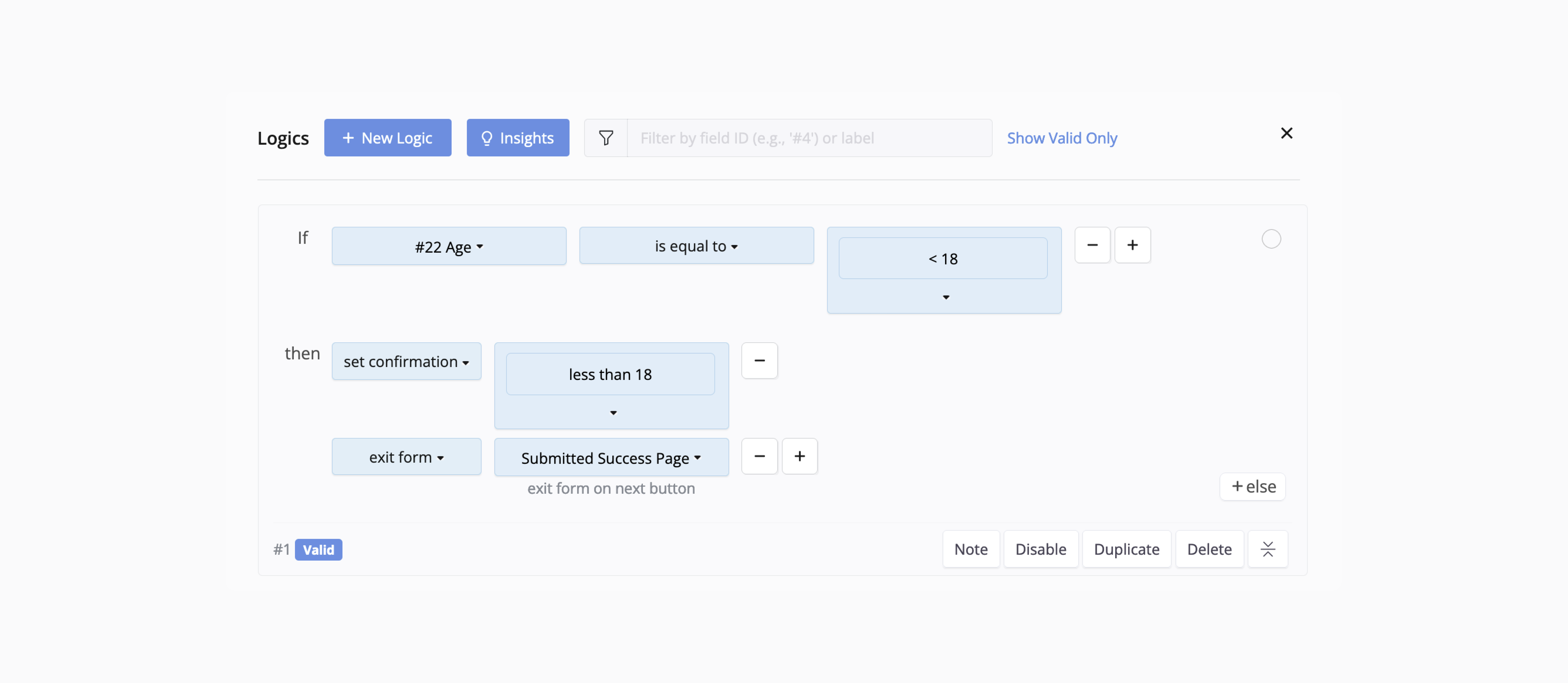
Based on their response, the form will either allow them to proceed or exit with a tailored confirmation message.
-
-
Make other neccessary customizations according to your needs.
-
Test your form: before publishing your form, thoroughly test it to ensure all conditions and redirects work as expected.
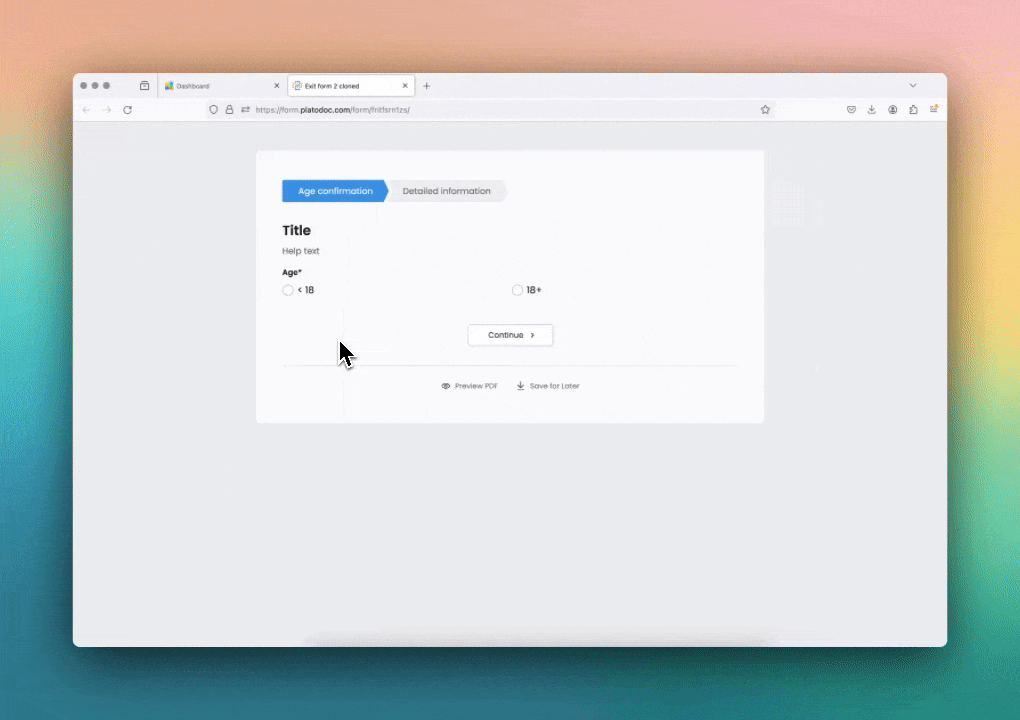
- Click Age < 18: verify that the form shows the appropriate message and exits.
- Click Age +: ensure that the form allows progression to the next page.
Conclusion
By setting up an age confirmation form with exit forms and conditional confirmation messages or redirect links, you can create a user-friendly and secure form experience. This ensures that only the appropriate users proceed, enhancing both the safety and effectiveness of your form. Follow the steps outlined above to implement this in your forms and provide a seamless experience for your users.
Ready to give it a try? Start setting up your age confirmation form today!




